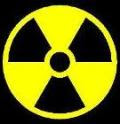The situation at Japan's quake-damaged nuclear plant remains very serious, the head of the UN nuclear watchdog said.
But IAEA director-general Yukiya Amano said he had "no doubt that this crisis will be effectively overcome".
Workers at the Fukushima Daiichi plant have been battling to cool reactors and spent fuel ponds to avoid a large-scale release of radiation.
Meanwhile, the death toll from the quake and tsunami has risen to 8,450, with nearly 13,000 people missing.
'Positive developments'The Fukushima plant was crippled by fire and explosions after the 11 March quake and tsunami।
Electricity has been restored to three of six reactors and engineers hope to test water pumps soon.
Earlier, some workers were temporarily evacuated from the complex after grey smoke was seen rising from the No 3 reactor.
Reports said the smoke appeared to have come from a pool where the reactor's spent fuel rods were kept.
Radiation levels did not appear to have risen significantly though after the smoke was spotted, the IAEA and Japan's nuclear safety agency said.
White smoke was later seen rising from the No 2 reactor.
"The crisis has still not been resolved and the situation at the [plant] remains very serious," Mr Amano, the head of the IAEA, told an emergency board meeting.
But he said he was starting to see positive developments; the cooling system had been restored to reactors 5 and 6, and they "are no longer an immediate concern".
The US Nuclear Regulatory Commission - whose staff are in Tokyo conferring with the Japanese government and industry officials - said the Japanese nuclear crisis appeared to be stabilising.
The NRC said that reactors 1, 2 and 3 had some core damage but their containment was not currently breached.
Meanwhile, the government has ordered a halt to some food shipments from four prefectures around the Fukushima nuclear plant, as concern increases about radioactive traces in vegetables and water supplies.
Villagers living near the plant have been told not to drink tap water because of higher levels of radioactive iodine.
The suspension - which the government said was just a precaution - applies to spinach from the prefectures of Fukushima, Ibaraki, Tochigi and Gunma, as well as milk from Fukushima।
Over the weekend spinach and milk produced near the nuclear plant was found to contain levels of radioactive iodine far higher than the legal limits.
However, senior government official Yukio Edano told a news conference that eating or drinking the contaminated food would not pose a health hazard. "I would like you to act calmly," he said.
The World Health Organization said it had no evidence of contaminated food reaching other countries. However, China, Taiwan and South Korea have announced plans to toughen checks of Japanese imports.
Bad weather forced Japanese Prime Minister Naoto Kan to cancel a planned visit to emergency workers near the Fukushima plant.
It is also making the recovery work a much more difficult task.
Search-and-relief efforts in the prefecture of Miyagi, where the police chief believes the final quake-tsunami death toll could reach 15,000, have been delayed by driving rain.
"We basically cannot operate helicopters in the rain," Miyagi official Kiyohiro Tokairin said.
"We have been using helicopters to deliver relief goods to some places but for today we have to switch the delivery to places that we can reach by road," he said।
More than 350,000 people are still living in evacuation centres in northern and eastern Japan.
There are shortages of food, water, fuel and medicine in the shelters, officials say.
Some aid from foreign countries has started to arrive, and the government has started the process of finding temporary housing in other parts of the country for those made homeless.
Workers in north-east Japan have begun building temporary homes for the displaced. The prefabricated metal boxes with wooden floors were put up on the hillside near the devastated town of Rikuzentakata.
Nearly 900,000 households are still without water.
In a rare piece of good news, an 80-year-old woman and her grandson were found alive on Sunday in the rubble of their home in Ishinomaki city, where they were trapped for nine days।

